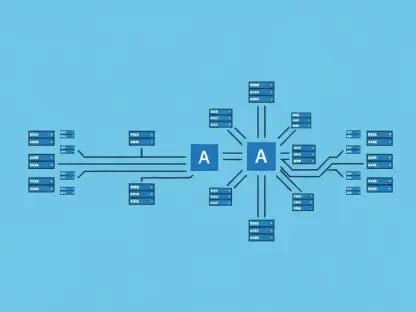In the evolving realm of telecommunications, Communication Service Providers (CSPs) have been grappling with the intricacies of managing networks that are scalable, reliable, and efficient. Historically, achieving this triumvirate has proven elusive, often forcing providers to sacrifice one element to bolster the others. However, an innovative shift is underway with the emergence of intent-based management. This approach reimagines network operations by aligning them with business intents, fostering networks that can self-adapt and evolve. Relying on a unified knowledge layer, this method orchestrates network decisions throughout their lifecycle, from strategic planning to real-time adjustments. As the telecommunications landscape becomes ever more competitive, the necessity for CSPs to simultaneously enhance operations without inflating costs becomes critical. Intent-based management thus emerges not just as a technological advancement but as a strategic imperative designed to transcend traditional limitations.
Intent-Based Autonomy: A New Paradigm
Transitioning from task-driven automation to intent-based autonomy represents a fundamental shift for CSPs that promises to overhaul the conventional network management narrative. Unlike traditional methods focused on executing predefined tasks, intent-based autonomy prioritizes overarching business goals. The essence of this paradigm lies in its ability to interpret strategic business intents, seamlessly translating them into operational directives that span the entire network lifecycle. This transformation is bolstered by the ‘End-to-end service realization using intent-based networks’ Catalyst, an initiative leveraging TM Forum Open APIs. By integrating intent-based management across various layers, this Catalyst aims to revolutionize CSPs’ automation approaches. Within this framework, achieving the Moonshot goal of Level 4 autonomous networks becomes not only a possibility but a tangible target. Realizing a network capable of autonomously managing itself aligns with the broader aspirations of the industry towards achieving true operational excellence.
A cornerstone of intent-based management is the integration of customer and operator intents into the service layer of the network architecture. These intents, whether derived from specific product orders or broader efficiency goals, guide network operations by translating into actionable requirements. For instance, customer intents linked with network throughput can prompt immediate adjustments to ensure quality of service. Meanwhile, operator intents, which consider factors like energy efficiency in line with TM Forum’s new standards, facilitate more sustainable and cost-effective operations. The implementation of these intents is orchestrated by network optimizers, known as rApps, coordinated through the non-real-time RIC to ensure cohesive management. This seamless integration enables CSPs to maintain high standards of service while addressing business-critical concerns such as energy consumption and customer demands.
Application in Real-World Scenarios
The practical application of intent-based management in real-world scenarios showcases its capabilities in resolving performance anomalies and conflicts that often plague networks. Through autonomous adjustments, the system maintains alignment with service intents, responding to anomalies as they arise. Service assurance mechanisms constantly monitor performance, triggering necessary actions to maintain high standards. By closing the feedback loop at the service level, networks become intrinsically more resilient, adapting to changes without human intervention. This capacity for self-healing and optimization is crucial in the face of growing demand for reliable and efficient network operations. For CSPs, this represents not just an operational advantage but a strategic imperative to stay ahead in a dynamically changing market landscape.
Despite its comprehensive potential, the Catalyst’s current application predominantly focuses on optimizing network slices for video streaming during live events. This focus on video streaming highlights a practical example of how customer and operator intents are used to meet precise performance specifications. By allocating resources effectively, the intent-based approach ensures uninterrupted high-quality streaming experiences that meet consumer expectations. Simultaneously, it pursues energy-efficient strategies that align with broader sustainability goals. This dual focus underscores the multifaceted benefits of intent-based management, offering CSPs a means to balance performance with sustainability, which is increasingly crucial in today’s environmentally conscious world.
Collaborative Efforts and Broader Implications
The pursuit of intent-based network management has spurred substantial collaborative efforts, notably through the Autonomous Networks Collaboration project. By harnessing TM Forum’s assets, including Open APIs and the latest Intent Ontology models, CSPs have been able to integrate these advanced technologies into their operational frameworks. This collaborative approach not only accelerates the development of autonomous networks but also fortifies the industry’s move towards a unified architecture that supports intent-based management. Such collaborations amplify the potential for widespread adoption of intent-driven strategies, promising broader implications for CSPs globally. By working collectively, the industry transforms theoretical concepts into practical, actionable solutions that can redefine network management.
Industry leaders like Telstra’s Mark Sanders have reinforced the practical benefits of implementing TM Forum standards, further validating the approach’s real-world viability. This endorsement speaks to the tangible improvements reported by CSPs already leveraging these standards, from enhanced automation and reduced manual oversight to better alignment with business objectives. The widespread recognition among industry experts underscores the transformational capacity of intent-based management in realizing true network autonomy. By extending across the network operations spectrum, from strategic planning to the deployment of rApps, this approach offers CSPs a comprehensive operational model that integrates business goals with technological capabilities.
The Path Forward
The shift from task-driven automation to intent-based autonomy signals a major transformation for CSPs, promising to redefine the narrative of network management. Traditional methods have centered on executing set tasks, but intent-based autonomy revolutionizes this by focusing on overarching business objectives. This concept excels in interpreting strategic business intents and converting them into operational directives that address the entire network’s lifecycle. This evolution is reinforced by the ‘End-to-end service realization using intent-based networks’ Catalyst, a forward-thinking initiative utilizing TM Forum Open APIs. By embedding intent-based management across diverse layers, this initiative seeks to reform CSPs’ approaches to automation. Within this structure, the ambitious goal of achieving Level 4 autonomous networks evolves from a mere possibility to an attainable target. A network that autonomously manages itself aligns with the sector’s widespread pursuit of operational excellence. This system integrates customer and operator intents into the network’s service layer, whether linked to product orders or broader efficiency aims.









